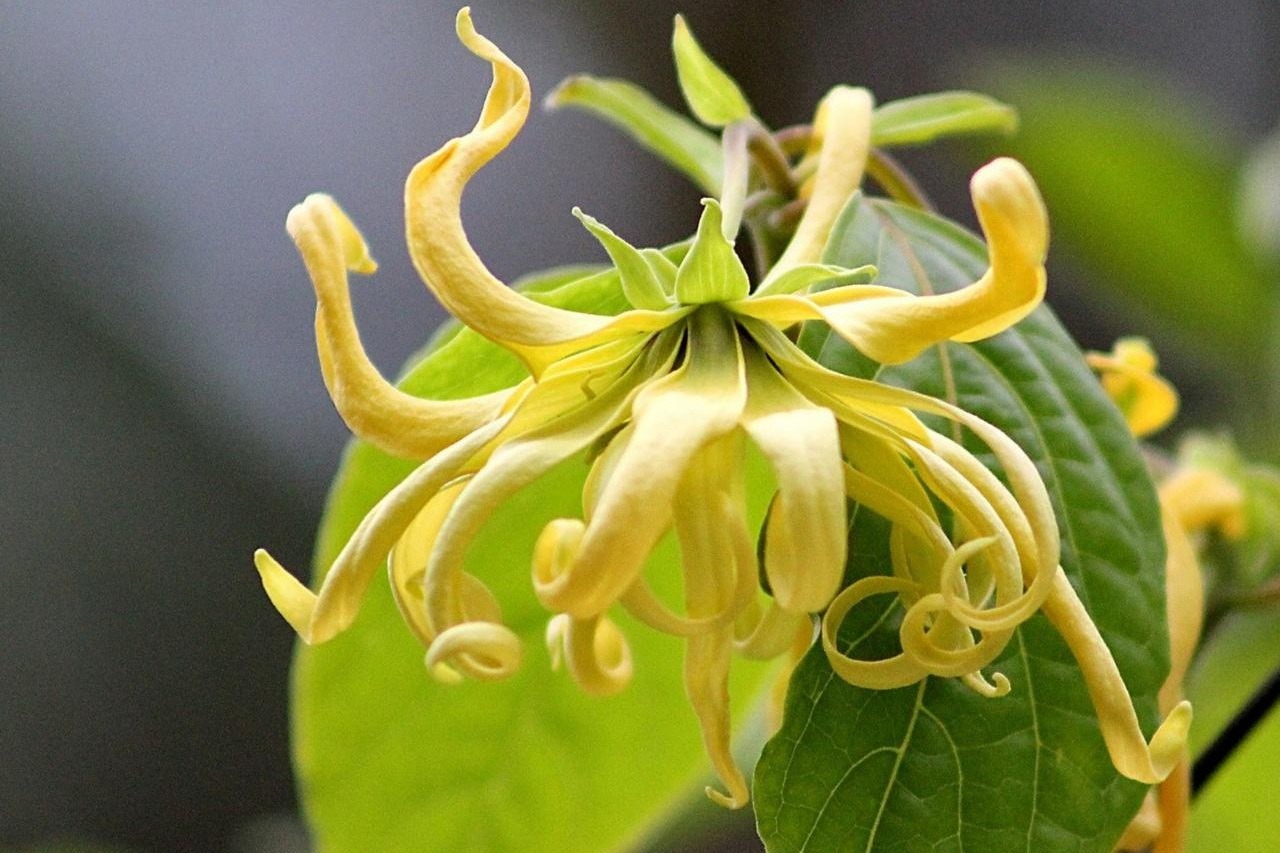To obtain CO2 extract, the flowers of the fragrant Cananga Odorata, better known as Ylang-Ylang, are used as starting material.
In domestic medicine, not only CO2 extract, but also ylang-ylang essential oil is practically not used, although in oriental medicine the healing effect of ylang-ylang essential oil is known and has been used for a long time. Given the similarity of the chemical composition of ylang-ylang essential oil and the CO2 extract from its flowers, it can be argued that the direction of action and effectiveness of these products are similar. CO2 extract of ylang-ylang is recommended for external use in the form of ointments and has a pronounced antibacterial effect, an antispasmodic effect and relieves headaches. Such ointments actively work well for dermatitis and eczema. As an aromatherapy agent, it combats coronary heart disease, cardiac arrhythmias and depression. The aroma of ylang-ylang is used in oriental medicine as a means of increasing libido in women and men.
In food production, it is recommended to use an oil solution of ylang-ylang CO2 extract or a water-soluble microemulsion in the production of the following products: fruit jams and confectionery fillings, in the production of caramel, as an additive to various milkshakes, butter and puddings, soft drinks, ice cream, baked goods, flavored teas and coffee. Currently, the food industry does not use the essential oils or CO2 extracts from fragrant ylang-ylang, but rather artificial flavors.
Biozevtika CO2 extract of ylang-ylang is a yellow oily liquid with a spicy, floral, sweet smell.
Main components of Ylang Ylang CO2 extract
| NAME | CONTENT IN % OF TOTAL VOLATILE COMPONENTS | FUNCTION |
| Limonene | 3,2 | Antibacterial, antidepressant and immune stimulant. Shows anti-inflammatory and antioxidant properties. Perfume aroma, antifungal and aseptic agent. Repellents |
| Pinene | 9,9 | Locally irritating, antiseptic, expectorant, diuretic |
| Cinnamaldehyde | 2,1 | Food flavoring, repellent, fumigant. Has antimicrobial properties, helps with obesity and symptoms of Alzheimer’s disease |
| Benzyl acetate | 15,2 | Perfume ingredient, expectorant |
| Beta Farnisen | 2,5 | Helps fight tooth decay, normalizes digestion, reduces stress and anxiety |
| Farnesol | 6,2 | Regulates the function of the sebaceous glands, softens the skin and is used against acne. Perfume ingredient |
| Caryophyllene | 5,4 | Used in perfumery as a natural fragrance |
| Beta-bisabolene | 3,1 | Anti-inflammatory, antitumoral, bactericidal |
| Nerol | 1,9 | Antiseptic, activates tissue regeneration processes |
| Terpeniol | 1,9 | Expectorant, bactericidal, anti-allergic, for metabolic disorders, respiratory diseases |
| Eugenol | 2,1 | Antibacterial, anthelmintic, anti-inflammatory, anesthetic |
In cosmetics, CO2 extract of ylang-ylang is used in the following preparations:
– to normalize water-fat metabolism in the dermis. Suppresses sebum production but does not dry out the skin
– for irritated, thin skin, soothes irritations, strengthens suntan
– for mature skin, as an ingredient with antioxidant, smoothing and regenerating effects
– as part of hair care products that strengthen hair, prevent hair loss, give it shine, manageability and volume
Ylang-ylang grows wild exclusively in the tropics of South Asia – Burma, the Philippines, Indonesia, but is currently grown in all Asian countries with a tropical climate.
